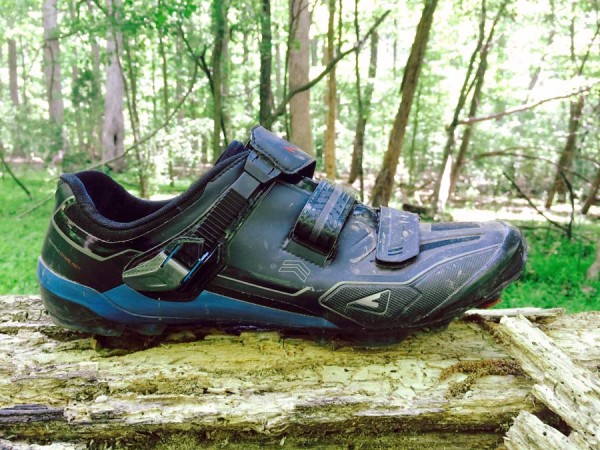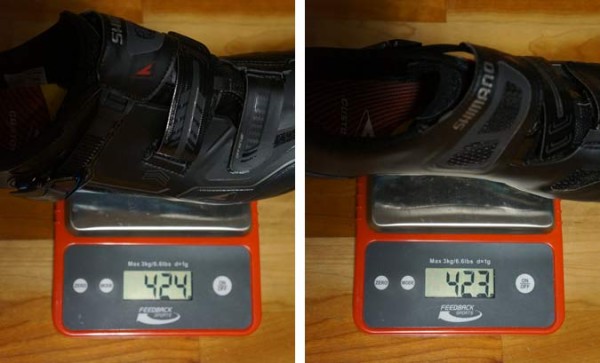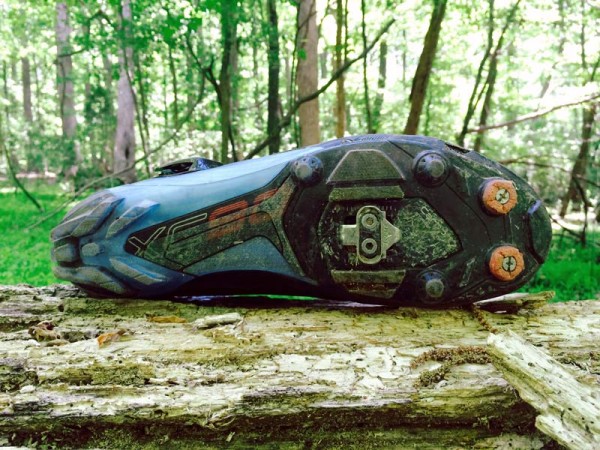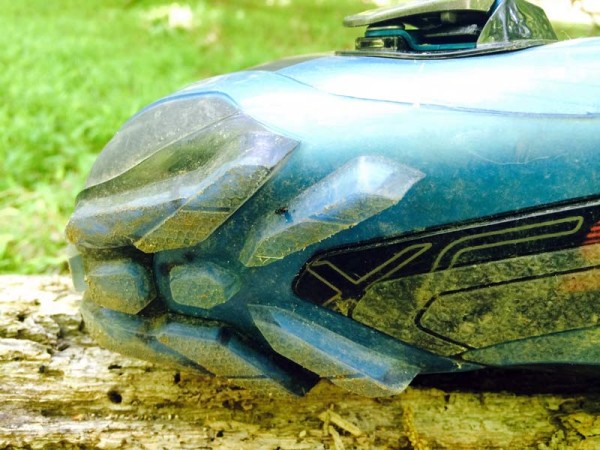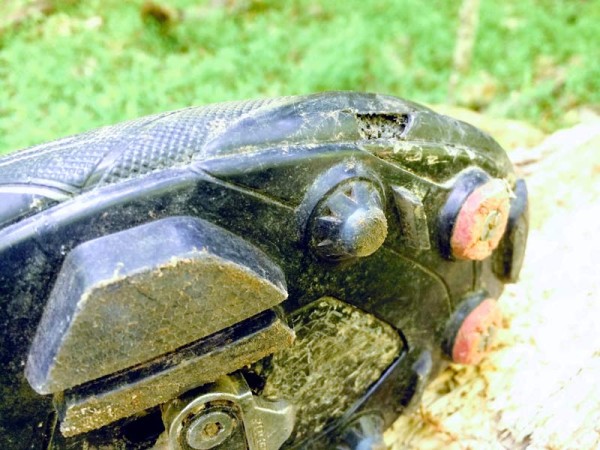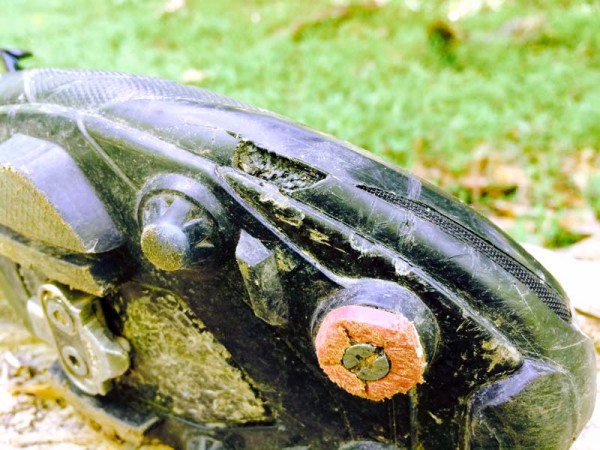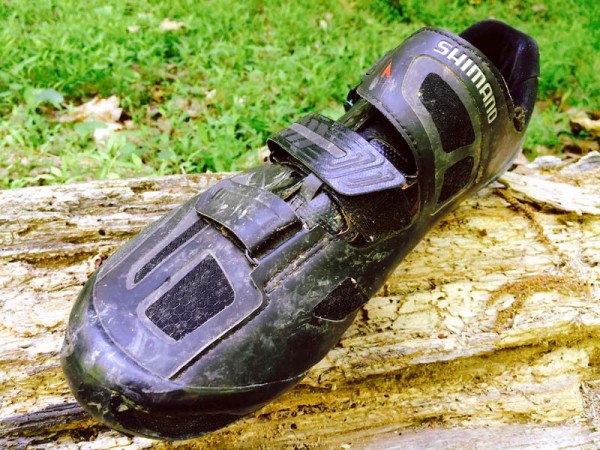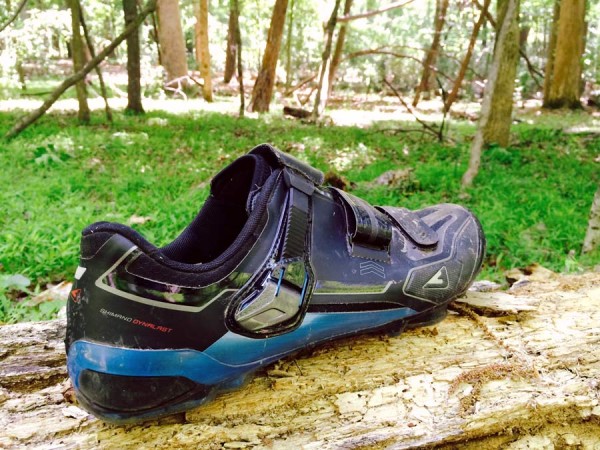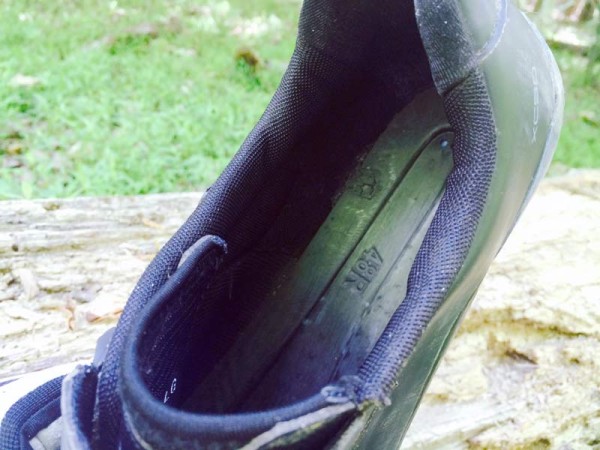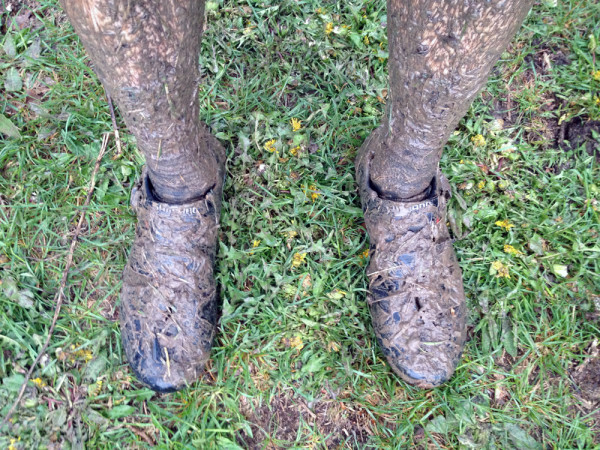First, a story to properly frame this review: Zach and I both received a pair of Shimano’s XC90 top-level cross country mountain bike shoes for review. After about six months, he and I discussed them. I started by saying how comfortable they were. He replied they were too stiff for every day riding, not nearly as comfortable as the Pearl Izumi X-Project all conditions shoe he’d been wearing. As with all things, these shoes’ comfort was a matter of perspective. I typically wear lightweight, somewhat stiff XC “race” shoes for most of my outings. Zach splits his time between Teva/Five10 type flats clipless trail/all-mountain type shoes and more walkable XC/trail offerings like the Project X when he’s not racing.
With that in mind, this review comes from my perspective. I’ve been wearing these shoes extensively for the past six months, for all manner of mountain biking and a few cyclocross rides and races. Among my collection of higher end XC shoes, they are extremely comfortable while still transmitting every bit of power to the pedals. Step past the break for the details…
Weights for a size EU47/US12.3 are 423g to 424g, which is about par for the course and a bit lighter than the 2012 Bontrager RXL, one of my other favorites for comfort and performance.
That’s right, US size 12.3. Shimano’s shoe sizing is one of my only real complaints about their shoes, and they do it for both road and mountain offerings. I’ve found it’s best to order solely based on their EU sizing as that’s always worked out right for me. I wear a size 13, and virtually every other brand matches up a 13 with EU47. (Had I ordered a 13, I’d end up with an EU49 – way too big)
The bottoms of the shoe use polyurethane lugs over a carbon fiber sole. The lugs are grippy enough for standard hike a bike sections, but there’s not a lot of flex to make upward ambulation easy. Quick jumps over a downed tree, barrier hops or run ups on grass are no problem, though, and that’s really the type of activity these shoes expect to see.
The material is also designed to shed mud quickly, which it seems to do.
Four small lugs are molded into the tread, two in front of the cleat and two behind. Two more optional toe spikes can be bolted on at the very front.
A plastic toe shield provides excellent coverage around the front and even has a vent to bring air in. Apparently it can crack…I didn’t even notice this missing chunk from it until I took these pics.
The carbon sole is visible under the cleat section, so Crank Brothers fans should definitely use the cleat shields.
One of my favorite features of Shimano’s shoes are the wider toe boxes. They run straight forward along the inside of the foot rather than coming to a central point like too many others. They’re not dress shoes, after all, and the shape more closely mimics that of my foot than other brands. Shimano’s Dynalast system shapes the last and defines the “springiness” of the sole to reduce fatigue and undue stress on the foot, calve and hamstring muscles. So, beyond just fitting well, there’s some science in there that helps keep them comfortable mile after mile while theoretically making you more efficient, too.
The two lower Velcro straps run criss-cross from each other, which does a good job supporting the mid foot. To get the shoes on and off easily, the center strap needs to be opened pretty far, which leads to one minor complaint: The transition from fuzzy to scratchy Velcro has stitching just a bit off the edge, so when pulling the strap back through the loop to tighten it, the end of the scratchy part often catches the loop and has to be manually flattened. It’s a small thing, but something to deal with most times you put on the shoes.
The upper strap slides into a ratcheting buckle with two distinct levers. The oversized-and-easy-to-grab-while-riding main lever cinches things down to secure your foot. Press the smaller lever on top to release. Very easy to do while riding.
The uppers are a combination of Rovenica synthetic leather and a thin 3D mesh. It’d be nice if the mesh sections were larger for better venting, but I can’t honestly say I’ve ever thought about how hot my feet were getting while wearing these.
The uppers are heat/vacuum moldable, a process that can be done at select Shimano dealers when you buy the shoes…or anytime after. Shimano’s PR rep says it’s best if you do it when they’re new if only because the cleat’s not on it yet and they’re clean, but there’s no reason they can’t be molded later on. I received my test pair at Interbike’s demo day last fall and never did make it into a dealer to get them custom molded, but they fit just fine. Better than fine, actually – really, really well.
The heel cup is well shaped, but not over tight. Even with a directional fabric lining to prevent heel lift, it feels the tiniest bit loose. During pedaling and sprinting, my foot stayed firmly planted. It’s only during very steep hike-a-bike sections that it feels like the heel might be coming up a bit. It doesn’t ever really pull out, but that hint of extra space could distract you on bad days. That said, it probably also contributes to their overall comfort.
The insoles are lightweight and soft, with a sleeve between top and bottom layers for arch supports. The insoles are also heat moldable.
Under the insoles, the shaped carbon fiber last is visible. The ridged shape adds strength while allowing a very thin, low profile last. While certainly stiff enough to create a solid platform for pedaling, it’s not punishingly so. Many years ago, I had a pair of Nike mountain bike shoes that were so overwhelmingly stiff that my feet fell asleep in them every time. Thankfully, Shimano’s Dynalast design has figured out how to coddle your dogs without sacrificing performance, making these one of the most comfortable “race day” shoes on the market.
And since, in some small way, every day a race day, these have become my go-to shoes for normal mountain biking. The combination of a supple microfiber upper and non-traditional strap directions meant no pressure zones or hot spots up top. The wider last and toe box kept my feet from losing feeling. And other than that little chunk out of the toe protector, they’re holding up very well. Based on these and several pair of road shoes I’ve owned over the past few years, I’d strongly recommend giving Shimano a look next time you’re shoe shopping.
Zach’s Take: It’s important to point out that when Tyler and I were discussing the shoes, when I mentioned they were too stiff for my liking that was in reference to every day riding only. When it comes to racing, the XC90s are incredible. Mostly due to the fact that for a super stiff race type shoe they are impressively comfortable. But as Tyler pointed out, for me they are not an every day ride type of shoe unless you never get off your bike for sketchy creek crossings, scrambles up hills, etc. Because of their unyielding stiffness to the pedals, the XC90s are somewhat of a chore to hike a bike, or walk in especially when you’re used to more flexible options.
One of the things that impressed me the most about the blue kicks was how well the uppers held up to extremely wet and muddy conditions. Typically, most race shoes I’ve used have tended to stretch when the uppers become saturated, or worse – the velcro lets loose. Even after the muddiest short track race I think I’ve ever participated in, the straps on the XC90s were just as tight as when I started the race.
Would I recommend these shoes as an every day cross country shoe? Probably not. But as a high performance race shoe – absolutely.
Retail is around $295. Available in half sizes and wide versions.
